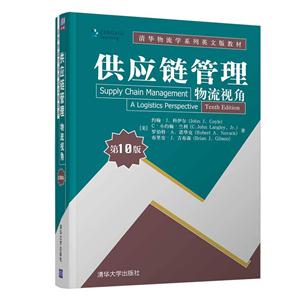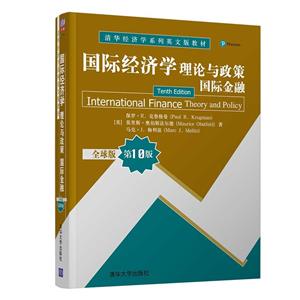
作者:[美]沃尔特·小哈里森(
页数:732
出版社:清华大学出版社
出版日期:2020
ISBN:9787302561934
电子书格式:pdf/epub/txt
内容简介
本书涵盖了财务会计的基本概念、原则和理论方法,内容完整。
作者在写作过程中,注意理论联系实际,书中例题、案例以及书后习题绝大多数为世界有名大公司的实例,容易引起读者的兴趣。教材在一开始即强调会计信息与决策的关系,各章节都体现了作者对决策与会计信息关系的重视。本书另一个特点是现金流量表项目贯穿始终。教材中各章节均注意强调会计处理中存在的职业道德问题,这对于会计师这一行业来说十分重要。书后还附有大量习题与案例。
作者简介
沃尔特·小哈里森(Walter T. Harrison, Jr.)是美国贝勒大学会计学院教授。查尔斯·亨格瑞(Charles T. Horngren)是美国斯坦福大学会计学教授,美国会计学界和教育界享有盛誉的杰出学者,会计名人堂成员。威廉·托马斯(C. William Thomas)是美国贝勒大学会计学院教授。
本书特色
由四位美国著名会计学者编著的中级财务会计教材,涵盖了财务会计的基本概念、原则和理论方法,包括财务报表编制(资产负债表、损益表和现金流量表)、会计循环和财务报表分析。作者在写作过程中,注意理论联系实际,书中例题、案例以及书后习题绝大多数为世界著名大公司的实例,容易引起读者的兴趣。本书适合会计学、审计学、财务学专业本科生作为财务会计教材,也可作为金融学、管理学、经济学各专业学生会计学课程的参考教材。
由美国著名会计学者编著的原汁原味的财务会计教材,作者在写作过程中,注意理论联系实际,书中例题、案例以及书后习题绝大多数为世界著名大公司的实例,容易引起读者的兴趣。
目录
Preface
Visual Walk-Through
Chapter 1 The Financial Statements
SPOTLIGHT The Walt Disney Company
Explain Why Accounting Is the Language of Business
Who Uses Accounting Inrormation?
Two Kinds of Accounting: Financial Accounting and Management Accounting
Organizing a Business
Explain and Apply Underlyjng Accounting Concepts, Assumptions, and Principles
The Entity Assumption
The Continuity (Going-Concern) Assumption
The Historical Cost Principle
The Stable-Monetary-Unit Assumption
Apply the Accounting Equation to Business organizations
Assets and Liabilities
Owners’ Equity
Evaluate Business Operations Through the Financial Statements
The Income Statement Measurcs Operating Performance
The Statement of Retained Earnings Shows What a Company Did with Its Net Income
The Balance Sheet Measures Financial Position
The Statement of Cash FIows Measures Cash Receipts and Payment
Construct Financial Statements and Analyze the Relationships Among Them
Evaluate Business Decisions Ethically
American Institule of Certified Public Accountants Code of Professional Conduct
End-of-Chapter Summary Problem
Chapter 2 Transaction Analysls
SPOTLIGHT The Walt Disney Company Records Millions of Transactions a Year!
Explain What a Transaction Is
Define “Account,” and List and Differentiate Between Different Dpes of Accounts
Assets
Liabilities
Stockholders’ (Owners’) Equity
Show the Impact of Business Transactions on the Accounting Equation
Example: Alladin Travel, Inc.
Transactions and Financial Statements
Mid-Chapter Summary Problem
Analyze the Impact of Business Transactions on Accounts
The T-Account
Increases and Decreases in the Accounts: The Rules of Debit and Credit
Additional Stockholders’ Equity Accounts: Revenues and Expenses
Record (Journalize and Post) Transactions in the Books
Copying Information (Posting) from the Journal to the Ledger
The Flow of Accounting Data
Accounts ancr Posting to the Ledger
Construct and Use a Trial Balance
Analyzing Accounts
Correcting Accounting Errors
Chart of Accounts
The Normal Balance of an Account
Account Formats
Analyzing Transactions Using onIoly T-Accounts
End-of—Chapter Summary Problem
Chapter 3 Accrual Accounting & Income
Chapter 4 Internal Control & Cash
Chapter 5 Short-Term Investments & Receivables
Chapter 6 Inventory & Cost of Goods Sold
Chapter 7 Plant Assets, Natural Resources, & Intangibles
Chapter 8 Long-Term Investments & the Time Value of Money
Chapter 9 Liabilities
Chapter 10 Stockholders’ Equity
Chapter 11 Evaluating Performance: Earnings Quality, the Income Statement, & the Statement of Comprehensive Income
Chapter 12 The Statement of Cash Flows
Chapter 13 Financial Statement Analysis
APPENDIX A: Apple Inc. Annual Report
APPENDIX B: Under Armour, Inc. Annual Report
APPENDIX C: Typical Charts of Accounts for Different Types of Businesses
APPENDIX D: Summary of Generally Accepted Accounting Principles (GAAP)
APPENDIX E: Summary of Differences Between U.S. GAAP and IFRS Cross Referenced to Chapter






![清华管理学系列英文版教材战略管理:理论与案例(第12版)/[美]查尔斯.W.L.希尔-技术教育社区](https://image12.bookschina.com/2018/20180306/B7819605.jpg)







